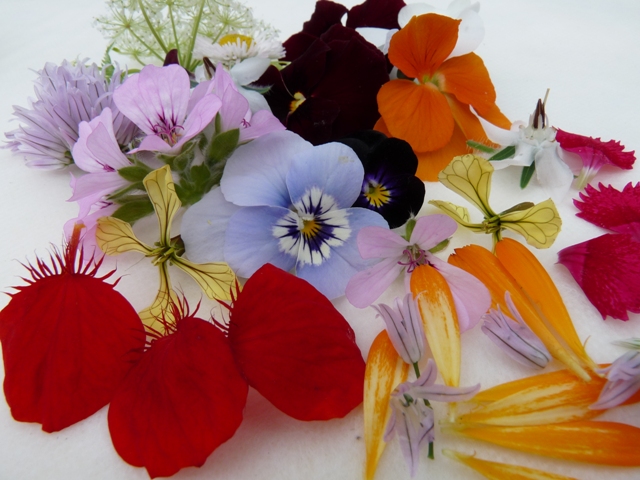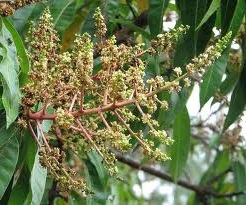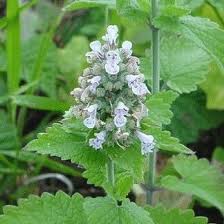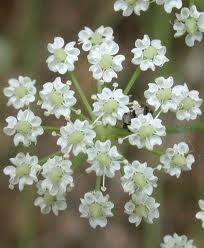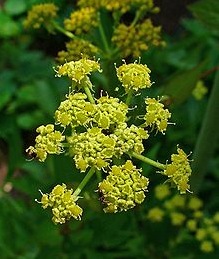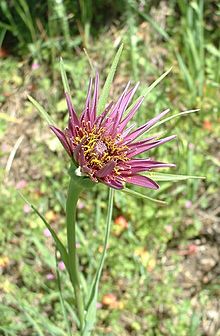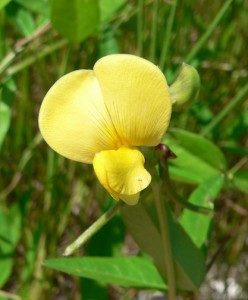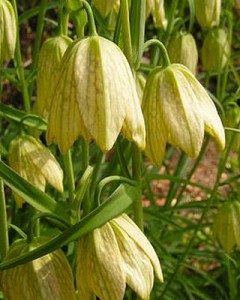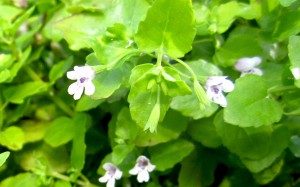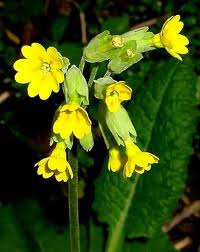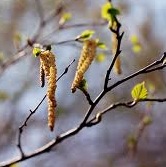Mango, Catnip, Pignut, Lovage, Salsify, Hairy Cowpea, Fritillary, Mint, Cow Slip, Birch
Did you know mangoes and poison ivy are botanical kissing cousins? And a sensitivity to one can be a sensitivity to the other? In fact there several related species, all in the Anacardiaceae family: Mangoes, poison ivy, poison sumac, Brazilian pepper, cashews, and pistachios. You can see the spread, three edibles, one on the cusp of edible/toxic, and two toxics. Some folks might be allergic to all, some to only a couple. Many people get a rash on their mouth after eating mango, called Urushiol-Induced Contact Dermatitis. The fruit is originally from India, cultivated for some 4,000 to 6,000 years. It is reported to be the most produced tropical fruit…. yah know…. I question that statistic. I would have thought bananas would have claimed that title. Incidentally, bananas are dying off. Your grandkids may never get to eat a banana. Anyway… when first exported around the world mangoes were pickled because of the distances and time involved. In fact “mangoed” became a verb meaning pickled. Mango blossoms grow on long panicles and have a scent similar to Lily of the Valley. Not only are they edible but young leaves as well… as long as you don’t have an allergy. Young leaves and flowers boiled. You can make a natural mosquito repellent by burning dried mango flowers, or use them to make a tea high in tannin. Oh, never burn mango wood. It’s like burning poison ivy. The urushiol gets in the air then your lungs then you’re in the emergency room with poison all over your outside and insides.
Catnip: Most cats love it, a few don’t. The difference is genetic. The active chemical is Nepetalactone. It’s a mild hallucinogenic that produces euphoria in many cats. In humans it makes you sleepy, like chamomile though in large amounts it is emetic. Catnip (Nepeta cataria) is an herb of the mint family and at one time was a spice found in the kitchen. Although a native to Europe, it has been exported to the rest of the world and in some places is considered a weed. It is naturalized in every state except Florida and all the first tier providences of Canada. Even though it is considered a weed most folks still think of it as a cultivated plant because most buy it for their cats. Indeed, growing catnip can be a problem because feral cats and domestics on the roam won’t leave it alone. When protected catnip grows to about a yard high, branches much, and is topped by small white flowers with purple spots, a common trait of the mint family. The leaves can be candied or brewed into a mint-like aromatic tea. In Europe the leaves and young shoots are put into salads or seasoning for sauces, soups and stews. While the flowers can be sprinkled on salads they are usually used to make tea, often along with leaves. Catnip is also high in Vitamin C.
Do you know where the islands of St. Pierre and Miquelon are? Do you know what they are? Among other things they’re the only place in North America where Bunium bulbocastanum is naturalized. The islands are situated at the entrance of Fortune Bay off the southern coast of Newfoundland, Canada. The odd part is they are not part of Canada but still part of France, a tiny toehold still in the New World. Residents are French citizens and vote in French election though the home county is more than 4,000 miles away. It was from these islands that a large amount of Canadian whisky was smuggled in the the United States during prohibition. Easy to grow B. bulbocastanum is called Pignut and Earth Chestnut. It has lacy white flowers similar to Queen Ann’s Lace and attractive foliage. Pignut sets large clusters of small tubers that taste like sweet chestnuts. They are eaten raw or boiled as a vegetable. Leaves can be used like parsley. The seeds and flowers are used for flavoring. British forager Ray Mears included the Pignut in one of his early television series but not in his subsequent books because they taste so good they’re becoming scarce in England.
Botanists can’t agree exactly where Lovage came from, though the Old World is close enough for our purposes. Lovage’s beginnings may be humble but it has risen to high esteem for its many usages. Native to perhaps the Mediterranean or southwest Asia, Lovage is cultivate throughout Europe and North America. Highly aromatic it is similar looking to flat-leaf parsley only much larger. The flavor is similar to parsley and celery combined with a notes of anise and curry. Botanically Levisticum officinale leaf stalks and stem are blanched and eaten like celery, or peeled and eaten. They can also be candied. Young leaves are chopped and added to salad, soups, stews, seafood, and omelets. The seeds are used for flavoring, often in breads and confections. An aromatic tea can be made from dried leaves or grated roots. And the flowers are edible.
This plant’s other names include Goatsbeard, Oyster Plant, Vegetable Oyster, Jerusalem star, Purple Oyster Plant, and Meadow salsify. Commoningly called just Salsify, botanically it is Tragopogon porrifolius. As you might have surmised to some the root tastes faintly of oysters, to others parsnip, and probably to some like oystery parsnips. Native to the Mediterranean area it has been introduced to Great Britain, northern Europe, South Africa, Australia, Canada and the United States. It is found in almost all the states including Hawaii but excluding the Old South except Georgia which has it. Roots are eaten raw in salads, or they are boiled, baked, and sauteed. They are added to soups or can be grated and made into cakes. Flower buds and flowers are eaten raw in salads or cooked then cooled and added to salads. The flowers are also pickled. Young flower stalks are cooked and dressed like asparagus. Sprouted seeds are put in sandwiches or in salads. The sap can be used as gum. Bradford Angier, a well-known Canada-based forager, says the yellow salsify is also edible.
Hairy cowpeas like water. Not exactly in water but certainly near it, water’s edge. You’ll find them in the same places you find the Ground Nut, Apios americana. When you’re near water, fresh or salt, look for pure yellow pea-like blossoms though it’s not really a pea but a bean, and related to the Mung Bean and the Black Eye Pea, which is also a bean. While the Hairy Cowpea blooms and fruits all year locally it prefers the fall for seed production. It’s usually at that time collecting them is a calorie-positive activity because you can get a lot of the seeds at one time. Of course, the rest of the year is a good time to collect the blossoms and boil them with other potherb fare. The roots can be chewed to extract their sweetness, the seeds can be shelled and cooked and as mentioned the flowers cooked.
Originally from China but now grown around the world the Fritillary makes an interesting addition to a flower garden. Soft bell-shaped blossoms with a pale green netting on the outside of the petals and a pale red netting on the inside makes this Lily family member easy to identify. The particular species we’re interested in is Fritillaria verticillata. Their name comes from Dead Latin for dice box, fritillus, a reference to the check patttern the veining makes. And while we like fritilaries rodents and deer do not. Young plants, peals and flower buds are eaten after parboiling. They are used in soups or as a herb or cooked with soy sauce. The bulbs are eaten fried or candied. Another members of the genus with edible bulbs is Fritillaria camtschatcensis. The buds might remind you of the Daylily and indeed while in different genera they are botanically standing next to each other. One more point: Do not experiment with fritilaries. The two listed here are known edibles. Others may contain toxic amounts of various alkaloids.
Mint is such a common edible I almost didn’t include it. Also, which one do you use and do I put it in the cultivated edible lineup or the wild edibles? There’s over 200 genera and some 7,000 species in the mint family. The largest is Salvia with some 900 members. It would be a lot easier if we were talking about Florida Pennyroyal which is a monotypic genus, a family with one member, not thousands. I am going to opt for a local mint as you probably already know about your local mint. I learned this mint as Micromeria brownei. Now it is Clinopodium brownei. Ahhh… botany always trying to improve itself. The mint went from Small Flower Parts Brown to Slope Footed Brown. I’m sure you can see the immediate and dramatic nomenclature improvement…. I was also told all those decades ago it had no common name. When the Internet was born the aquarium trade starting calling it Creeping Charlie (which many different species are called.) Later I saw St. John’s Mint… hmmm not too bad as the St. John’s River runs north through the peninsula of Florida. Only recently has it been called “Florida Water Mint” not a name that inspires me as it can be found in much of the Old South… Maybe Old South Mint is in the offering. This little plant can be found anywhere I teach in the warm south near fresh water. In fact it also grows in Interstate medians leaving a mint aroma in the air for days after cars careered off the pavement during accidents. A one-inch part of any of it, blossoms or stem in a cup of hot water makes a minty tea. The entire plant can be used as mint. Warning: It is a strong, no wimpy mint it. Start sparingly until you get your gauge of use.
One of my grandmothers loved Cow Slip greens. Cow Slip is from the old English word “cuslyppe” which means cow dung. Apparently the species has the same feeding preferences as some famous mushrooms. So my grandmother would make my mother go out in the cow-containing pastures to pick the Cow Slip greens. And from the way my mother tells the tale my grandmother didn’t care whose pasture she spied the plants in. They were destined for consumption after my mother fetched them. From temperate Europe and Asia originally, Cow Slip, Primula veris, is in the same genus as the (English) Primrose mentioned earlier. Flowers are used in salads, conserves, or as pickles and a garnish. They have also been used to make cow slip wine and vinegar. Leaves are eaten raw in salads or used to make a tea. It is found in northeastern North America.
There are several advantages to living where it never snows, and a few disadvantages. Many plants need cooler weather to reproduce or fruit or just thrive. Birches do not like Florida though they can be planted in the northern bounds of the state. Birches were a common tree of my youth, white birch, golden birch and paper birch. Birches can be tapped like maples. The twigs and catskins have been used as a wintergreen-ish flavoring for as long as we have written records about North America. And of course there were the famous birch bark canoes. What you also might not know is that an epoxy-like tar can be extracted from birchwood. The original super glue. While most birches have edible parts the birch we are interested in this overview in the Paper Birch, Betula papyrifera. Very young leaves, shoots and catkins can be eaten in salads or stir fried. The sap makes a drink, a syrup or a sugar, depending upon how long you heat it up. It can also be used to make birch beer and vinegar. A tea can be made from the leaves and the wood is used to smoke meat.
See Edible Flowers: Part Sixteen

